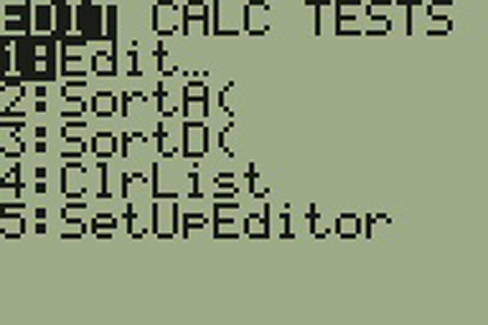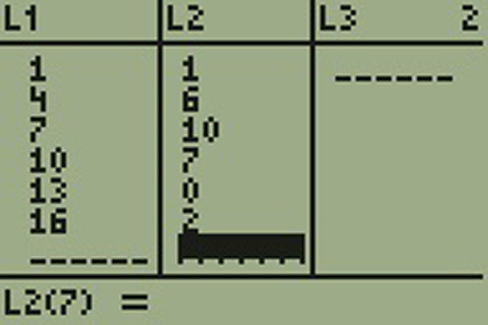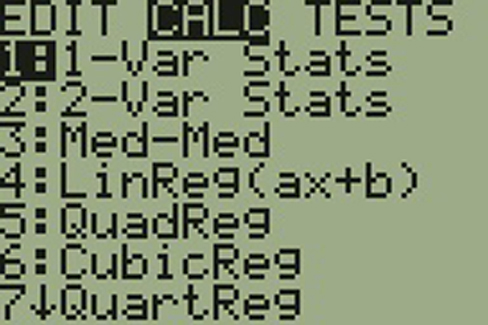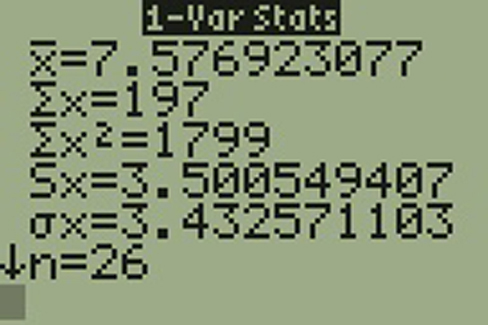| << Chapter < Page | Chapter >> Page > |
| Data | Frequency | Relative Frequency | Cumulative Relative Frequency |
|---|---|---|---|
| 33 | 1 | 0.032 | 0.032 |
| 42 | 1 | 0.032 | 0.064 |
| 49 | 2 | 0.065 | 0.129 |
| 53 | 1 | 0.032 | 0.161 |
| 55 | 2 | 0.065 | 0.226 |
| 61 | 1 | 0.032 | 0.258 |
| 63 | 1 | 0.032 | 0.29 |
| 67 | 1 | 0.032 | 0.322 |
| 68 | 2 | 0.065 | 0.387 |
| 69 | 2 | 0.065 | 0.452 |
| 72 | 1 | 0.032 | 0.484 |
| 73 | 1 | 0.032 | 0.516 |
| 74 | 1 | 0.032 | 0.548 |
| 78 | 1 | 0.032 | 0.580 |
| 80 | 1 | 0.032 | 0.612 |
| 83 | 1 | 0.032 | 0.644 |
| 88 | 3 | 0.097 | 0.741 |
| 90 | 1 | 0.032 | 0.773 |
| 92 | 1 | 0.032 | 0.805 |
| 94 | 4 | 0.129 | 0.934 |
| 96 | 1 | 0.032 | 0.966 |
| 100 | 1 | 0.032 | 0.998 (Why isn't this value 1?) |
The following data show the different types of pet food stores in the area carry.
6; 6; 6; 6; 7; 7; 7; 7; 7; 8; 9; 9; 9; 9; 10; 10; 10; 10; 10; 11; 11; 11; 11; 12; 12; 12; 12; 12; 12;
Calculate the sample mean and the sample standard deviation to one decimal place using a TI-83+ or TI-84 calculator.
μ = 9.3
s = 2.2
Recall that for grouped data we do not know individual data values, so we cannot describe the typical value of the data with precision. In other words, we cannot find the exact mean, median, or mode. We can, however, determine the best estimate of the measures of center by finding the mean of the grouped data with the formula:
where
interval frequencies and
m = interval midpoints.
Just as we could not find the exact mean, neither can we find the exact standard deviation. Remember that standard deviation describes numerically the expected deviation a data value has from the mean. In simple English, the standard deviation allows us to compare how “unusual” individual data is compared to the mean.
Find the standard deviation for the data in [link] .
| Class | Frequency, f | Midpoint, m | m 2 | 2 | fm 2 | Standard Deviation |
|---|---|---|---|---|---|---|
| 0–2 | 1 | 1 | 1 | 7.58 | 1 | 3.5 |
| 3–5 | 6 | 4 | 16 | 7.58 | 96 | 3.5 |
| 6–8 | 10 | 7 | 49 | 7.58 | 490 | 3.5 |
| 9–11 | 7 | 10 | 100 | 7.58 | 700 | 3.5 |
| 12–14 | 0 | 13 | 169 | 7.58 | 0 | 3.5 |
| 15–17 | 2 | 16 | 256 | 7.58 | 512 | 3.5 |
For this data set, we have the mean, = 7.58 and the standard deviation, s x = 3.5. This means that a randomly selected data value would be expected to be 3.5 units from the mean. If we look at the first class, we see that the class midpoint is equal to one. This is almost two full standard deviations from the mean since 7.58 – 3.5 – 3.5 = 0.58. While the formula for calculating the standard deviation is not complicated, where s x = sample standard deviation, = sample mean, the calculations are tedious. It is usually best to use technology when performing the calculations.
Find the standard deviation for the data from the previous example
| Class | Frequency, f |
|---|---|
| 0–2 | 1 |
| 3–5 | 6 |
| 6–8 | 10 |
| 9–11 | 7 |
| 12–14 | 0 |
| 15–17 | 2 |
First, press the STAT key and select 1:Edit

Input the midpoint values into L1 and the frequencies into L2

Select STAT , CALC , and 1: 1-Var Stats

Select 2 nd then 1 then , 2 nd then 2 Enter

You will see displayed both a population standard deviation, σ x , and the sample standard deviation, s x .
The standard deviation is useful when comparing data values that come from different data sets. If the data sets have different means and standard deviations, then comparing the data values directly can be misleading.

Notification Switch
Would you like to follow the 'Introductory statistics' conversation and receive update notifications?